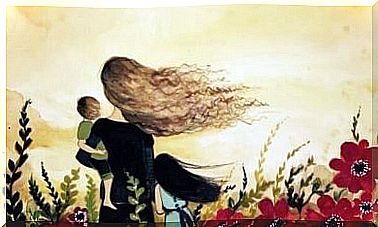Abuse In The Home Of Young Couples

Today we will talk about abuse in the home of young people. Adolescence and young adulthood are unique periods in many ways. Not just because you only go through it once, but also because of what it involves. We are preparing for adulthood and many types of new, exciting worlds are opening up for us.
The most interesting thing about these worlds is probably love. It is a teenage time when you start to get romantically interested in people. Even our usual relationships and friendships will now have changed. This opens the door to enriching experiences, but at the same time potential abuses.
Due to these changes and how relationships develop, tensions can arise. Unfortunately, physical and verbal aggression can also occur. It is important to know the factors that can lead to abuse in the home of young couples. You can then try to solve the situation so that it does not get worse.
Sociocultural factors: abuse in the home of young couples
There are many factors that can increase the risk of abuse in the home of young people. Social and cultural factors are high on the list and this is something you have to take into account. The sad reality is that many in our society still see violence as a valid way to get what they want. However, the majority is fortunately a little more sensible.

Traditional cultural perceptions regarding gender roles play a role here. This often means that men tend to have violent tendencies and that other men accept them. There are therefore calls for gender-based violence to be tolerated.
If you analyze the relationship patterns in young people and teenagers, however, we also find violent behavior in girls. At the same time, this tends to decrease as they get older. They often use this type of behavior to deal with their insecurity and anger, while guys do it to confirm their masculinity and exercise control.

Relationship characteristics
When it comes to the characteristics of relationships, we have family and friends. It is traditionally assumed that when there has been abuse within the family (either between the parents or against the children), it is more likely that this will continue as the children become teenagers and young adults. However, research says that “only” one third of all abusers have this type of background.
What happens is that young people see violence in their friends’ relationships. When this happens, the cultural perception that violence can be justified and even necessary is strengthened. People are within social groups that are important to them, and these groups agree with (or avoid condemning) the violent behavior.
Personal factors
We must also think about the personal factors that give rise to abuse in the home of young people. If there has already been aggression in previous relationships, it is more likely that it will happen again.
There are also more risk factors. Insecurity, jealousy, addiction, impulsivity or lack of social capacity for conflict resolution are some of them. Alcohol and drug use may also play a role in this problem.
In fact, domestic abuse of young people is a complex phenomenon. It is mostly caused not by just one of these problems, but by a combination. This is where the real danger lies.
That is why it is so important to develop programs that address all of these areas. There will then be hope that these abuses can be prevented before they occur and before the violence is normalized.

Photos: Adrian Sava, Alexis Brown Tr N Toan.









